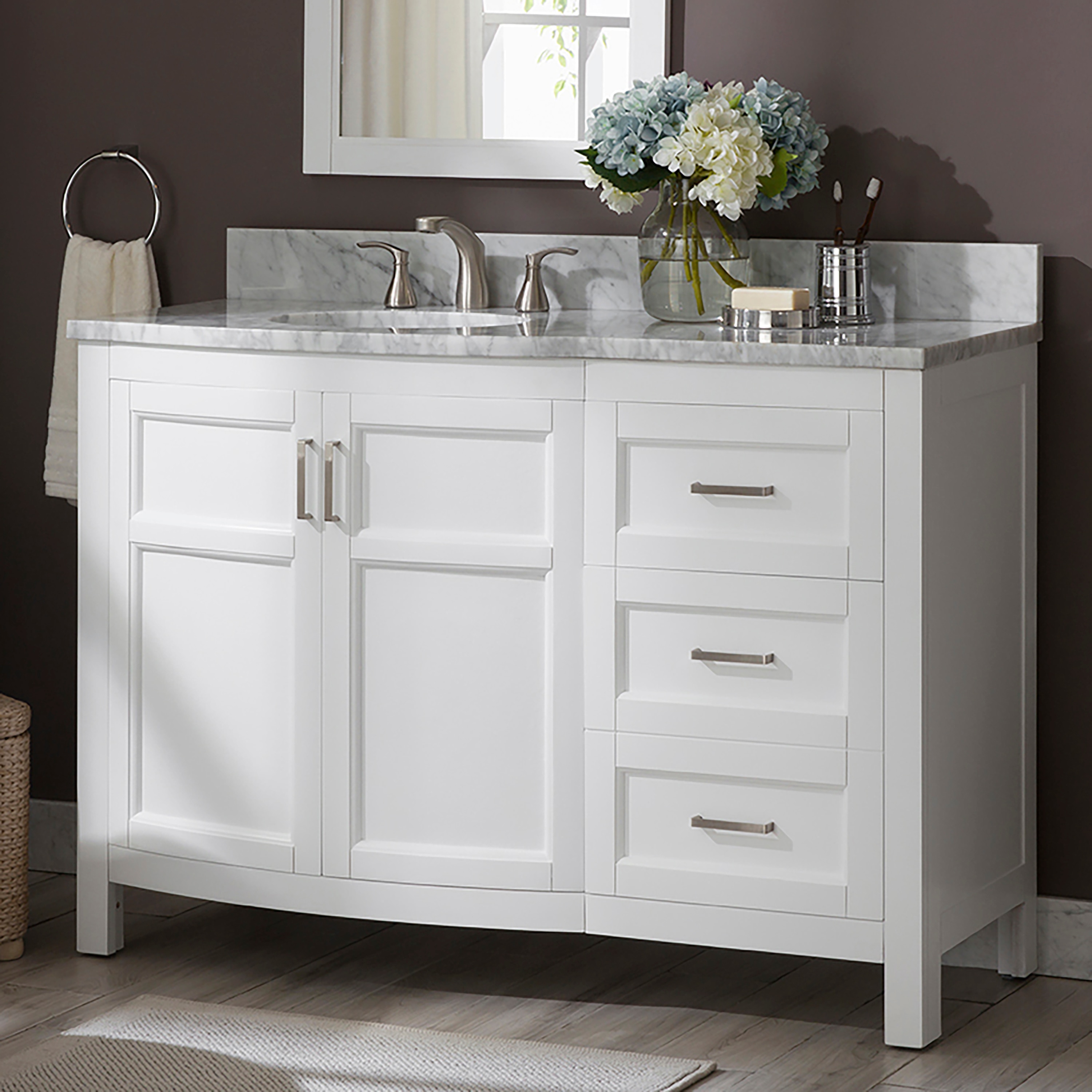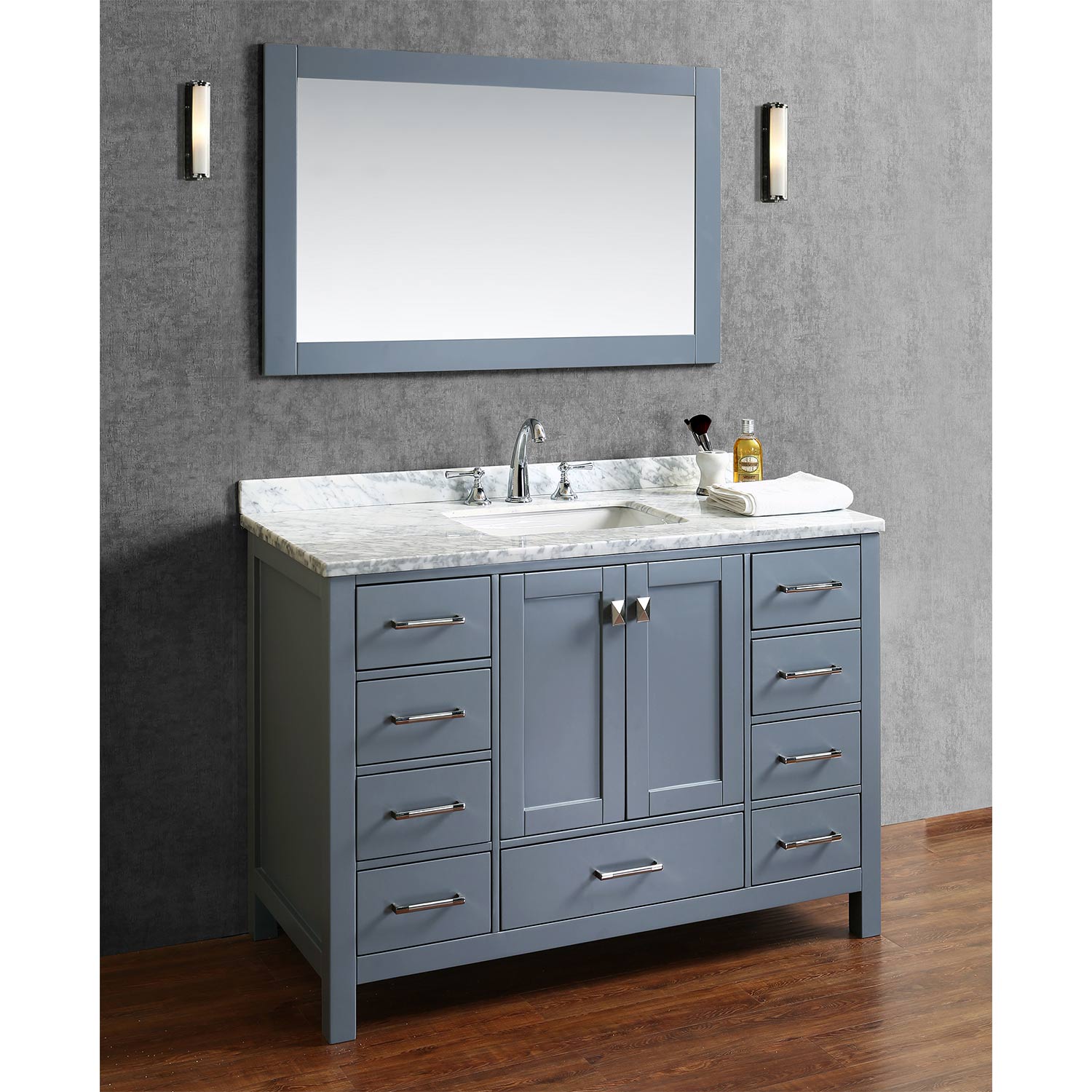Understanding the Demand for 48-Inch Bathroom Vanities Without Tops

The 48-inch bathroom vanity is a popular choice for many homeowners due to its generous size, providing ample storage and counter space. However, a growing trend is emerging: the demand for 48-inch vanities without tops. This preference reflects a shift in bathroom design aesthetics and homeowner preferences, with various reasons driving this trend.
The absence of a pre-installed top allows for greater customization and personalization in bathroom design. Homeowners can choose a countertop material that complements their overall bathroom style, budget, and functionality. This provides a unique opportunity to create a truly bespoke bathroom space.
Target Audience for 48-Inch Vanities Without Tops
The target audience for these vanities encompasses a diverse range of homeowners, each with their own motivations for choosing a vanity without a top.
- Budget-conscious homeowners often opt for vanities without tops, allowing them to choose a less expensive countertop material while still achieving a desired look.
- DIY enthusiasts find appeal in the flexibility offered by vanities without tops, allowing them to install a countertop of their choice and personalize the vanity further.
- Homeowners seeking unique designs are drawn to the customization options, enabling them to select a countertop that complements their bathroom’s overall aesthetic and complements other fixtures.
- Homeowners with existing countertops may choose a vanity without a top to integrate their existing countertop seamlessly, avoiding unnecessary replacement costs.
Benefits and Considerations of Choosing a 48-Inch Vanity Without a Top: Bathroom Vanities Without Tops 48 Inches

Choosing a 48-inch vanity without a top can offer a unique set of advantages and challenges. This approach allows for greater customization and flexibility in designing your bathroom space. However, it also requires careful planning and consideration to ensure a successful and functional outcome.
Customization Options
Purchasing a vanity without a top provides the freedom to select and install a countertop that perfectly complements your design vision and specific needs. This allows you to choose from a wide range of materials, colors, and styles to create a truly unique bathroom. You can select from natural stone, engineered stone, laminate, wood, or even glass, each offering distinct advantages in terms of durability, aesthetics, and price.
Cost Savings
In some cases, purchasing a vanity without a top can result in cost savings. By separating the purchase of the vanity base and the countertop, you can potentially find better deals on each component individually. This is particularly true if you are looking for a high-end countertop material, such as granite or marble, which can significantly increase the overall cost of a pre-assembled vanity.
Flexibility in Material Selection
The absence of a pre-installed countertop offers unparalleled flexibility in material selection. You can choose a countertop that perfectly matches your existing bathroom fixtures, flooring, or wall colors. This allows you to create a cohesive and aesthetically pleasing design that reflects your personal style.
Installation Considerations
Installing a vanity without a top requires additional steps compared to a pre-assembled vanity. You will need to ensure the countertop is properly supported and secured to the vanity base. This may involve using specialized brackets or adhesives, depending on the material and design of the countertop.
Potential for Water Damage
Without a pre-installed countertop, the vanity base is more susceptible to water damage. It is crucial to select a vanity base made from water-resistant materials and to ensure proper sealing and caulking around the countertop and sink to prevent water from seeping into the wood.
Material Choice
The choice of countertop material for a vanity without a top is crucial. You should consider factors such as durability, water resistance, stain resistance, and ease of maintenance. Some popular countertop materials for bathroom vanities include:
- Granite: Highly durable, scratch-resistant, and heat-resistant. Comes in a wide range of colors and patterns.
- Marble: Elegant and luxurious, but prone to etching and staining. Requires regular sealing and maintenance.
- Quartz: Engineered stone that is highly durable, scratch-resistant, and non-porous. Available in a variety of colors and patterns.
- Laminate: Affordable and durable, but not as resistant to scratches and heat as natural stone or engineered stone.
- Wood: Can add warmth and natural beauty to a bathroom, but requires regular sealing and maintenance to protect against water damage.
Design and Material Considerations for 48-Inch Vanities Without Tops

Choosing a 48-inch vanity without a top allows for greater customization and flexibility in creating a bathroom that reflects your unique style. The absence of a pre-determined countertop provides an opportunity to select a sink, countertop material, and design elements that perfectly complement your vision.
Vanity Styles
The style of your vanity should align with the overall aesthetic of your bathroom. 48-inch vanities without tops are available in a wide range of styles, allowing you to create a bathroom that feels classic, modern, or anything in between.
- Traditional: Traditional vanities often feature intricate carvings, ornate hardware, and classic finishes like cherry wood or mahogany. Examples include vanities with raised panels, fluted legs, and decorative moldings.
- Modern: Modern vanities emphasize clean lines, simple shapes, and minimalist design. They are often made from materials like stainless steel, glass, or high-gloss laminates. Examples include vanities with sleek, rectangular forms, integrated lighting, and minimal hardware.
- Contemporary: Contemporary vanities bridge the gap between traditional and modern styles. They typically feature clean lines and simple forms but may incorporate some decorative elements. Examples include vanities with geometric patterns, brushed metal accents, and bold colors.
- Rustic: Rustic vanities embrace natural materials and a sense of warmth and comfort. They often feature reclaimed wood, distressed finishes, and simple hardware. Examples include vanities with exposed beams, rough-hewn wood surfaces, and iron accents.
Vanity Materials
The material of your vanity plays a crucial role in its durability, aesthetics, and price.
- Wood: Wood is a classic and timeless material for vanities. It offers warmth, natural beauty, and durability. Popular wood choices include oak, maple, cherry, and walnut.
- Pros: Natural beauty, durability, warmth, versatility.
- Cons: Can be expensive, susceptible to water damage if not properly sealed, requires regular maintenance.
- Laminate: Laminate is a more affordable alternative to wood. It is a composite material that consists of layers of paper impregnated with resin. It is available in a wide range of colors and patterns.
- Pros: Affordable, durable, water-resistant, easy to clean.
- Cons: Not as natural or elegant as wood, can be prone to scratches and dents.
- Stone: Stone vanities, such as granite or marble, offer a luxurious and sophisticated look. They are durable and resistant to scratches and stains.
- Pros: Durable, scratch-resistant, stain-resistant, elegant.
- Cons: Expensive, can be heavy, requires sealing to prevent staining.
Design Elements, Bathroom vanities without tops 48 inches
Design elements can significantly enhance the functionality and aesthetics of your vanity. Consider incorporating these features to create a vanity that is both stylish and practical.
- Under-mount sinks: Under-mount sinks offer a sleek and modern look by concealing the sink rim beneath the countertop. They also make cleaning easier as there is no rim to trap debris.
- Open shelving: Open shelving provides a convenient and stylish way to store towels, toiletries, and decorative items. It can create a sense of openness and airiness in the bathroom.
- Integrated lighting: Integrated lighting can illuminate the vanity area and enhance the overall aesthetic of the bathroom. Consider incorporating LED strips, sconces, or under-cabinet lighting.
